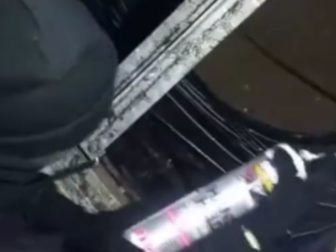War Drums: Carrier Strike Group Diverted as Chinese Naval Task Force Prowls Off Middle East
In a small change that could have major meaning amid the military chess moves taking place in the Middle East, the U.S. is changing its plans for the USS Dwight D. Eisenhower Carrier Strike Group.
The change could place the strike group in waters where Chinese warships have been active in recent months.
Last week, Defense Secretary Lloyd Austin announced that the Eisenhower strike group would head to the eastern Mediterranean instead of Europe as had been planned. Sailing in the eastern Mediterranean would have put the strike group to the west of Israel.
But that plan changed after a week in which U.S. forces in Syria and Iraq came under fire from Ian-backed militias, and a U.S. Navy ship in the Red Sea downed missiles launched from Yemen.
In the incident, the nine-hour duel saw the USS Carney down four cruise missiles and 15 drones, CNN reported.
On Saturday, Austin said in a statement the strike group will now go to the “Central Command area of responsibility.”
Central Command covers a vast amount of Middle East territory, including the Persian Gulf and Red Sea. Being based there puts the strike group closer to Iran, which has made rumblings about punishing Israel over its response to the massacre of Israelis conducted by the Hamas terror group.
Austin said the change is accompanied by having more forces ready for rapid deployment.
“I have also activated the deployment of a Terminal High Altitude Area Defense (THAAD) battery as well as additional Patriot battalions to locations throughout the region to increase force protection for U.S. forces,” he said.
[firefly_poll]
☢️ BREAKING: MIDDLE EAST
?China Navy is sending up to 6 warships in Middle East over past week amid rising tensions from Israel-Gaza war pic.twitter.com/kOgf7nW1Uc
— The Coastal Journal (@1CoastalJournal) October 21, 2023
American ships will not have the Persian Gulf to themselves. China has up to six of its warships stationed there, according to the South China Morning Post.
The 44th China Naval Escort Taskforce has been in the region since May.
Chinese ships recently docked in the Gulf nations of Oman and Kuwait,
Austin explained the change in plans in an interview with ABC.
“We’re concerned about potential escalation. In fact, what we’re seeing is the prospect of a significant escalation of attacks on our troops and our people throughout the region,” he noted.
“And because of that, we’re going to do what’s necessary to make sure that our troops are in the right position, they’re protected and that we have the ability to respond,” Austin added.
Although there had been conflicting information over whether the missiles fired at the USS Carney were aimed at the ship or bound for Israel, Austin said they were aimed at the ship.
“When you have cruise missiles heading towards one of our DDGs, one of our destroyers, that vessel is going to do what it needs to do to protect itself,” he said.
Austin said his hope was that the growing U.S. military presence in the region would deter a wider war.
“If any group or any country is looking to widen this conflict and take advantage of this very unfortunate situation that we see, our advice is: don’t. We maintain the right to defend ourselves, and we won’t hesitate to take the appropriate action,” Austin said.
This article appeared originally on The Western Journal.











